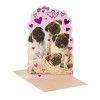

#Pug template browser code#
The above code is similar to the HTML code below. heading which is class attribute and #message which is id attribute of HTML tag. We have starting tags but there is no need to mention ending tags. Look at the above code, it looks similar to HTML, however, there is no need of. Now we will create a file Hello.pug in views directory and add the following code. It has hard coded content and no content can be edited or updated from Static views have static content to render.

Look at the code above, first we set pug engine, then we setĭirectory path for saving our templates. Nowuse app.set() method as shown below in index.js to set Pug templating engine.
#Pug template browser update#
Remember to use –save in command to update package.json.Īfter successful installation of Pug engine, create a directory named views.
#Pug template browser install#
To install Pug templating engine, execute the following command: $ npm install -save pug It supports interpolation, filters and including It supports template inheritance, conditions and many other attributes Have to update menu code in each webpage. But when we will create pages directly in HTML and CSS, we will For example, a menu is common is mostly all the We can use HTMLĪnd CSS directly to make web pages but it becomes difficult to manage these Using Pug templating engine for making frontend of Express JS. Module.Express is written in JavaScript and JS supports multiple templatingĮngines like Mustache, Handlebars, doT, EJS, Nunjucks, Underscore, Pug, ECT,

Since we need the special characters we need to use != instead of =.Īlternatively, you can use variables for this: - var url = '' Note that Pug by default escapes special characters in attributes. What you can do instead is writing the tag yourself: a(href!='') Link You cannot do the following as Pug won’t compile the perch:content here: // doesn't workĪ(href='perch:content(id="url" type="text")/') Link In Perch templates we often have Perch tags inside HTML tags. 3- Tags inside another tag’s attributes: Perch:content(id="title" type="text" label="Title")/ Perch:content(id="title" type="text" label="Title") While Pug automatically self-close HTML tags such as img and meta, you need to explicitly self-close your Perch tags when needed: // not self-closing In Pug you can output plain text (including raw HTML) like so: perch:before In this case, we have to manually write the opening and closing tags. It’s common to have an opening tag inside and the closing tag inside. This compiles to: Notes: 1- Manually outputting opening and closing tags: perch:before Here’s how you’d write a simple perch:content tag with Pug: perch:content(id="title" type="text" label="Title")/ So I decided to try using Pug (previously known as Jade), because why not?! I was using a HTML preprocessor on a non-Perch project and I started wondering whether using one to write Perch templates would be a worthy addition to my Perch workflow.


 0 kommentar(er)
0 kommentar(er)
